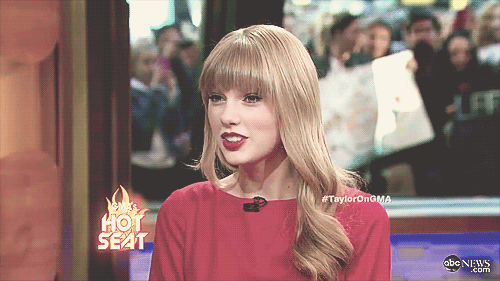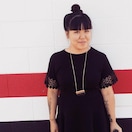People say it can get lonely at the top sometimes. So what better way to resolve that than to lend a helping hand to upcoming artists looking to climb the charts themselves? See it as pop stars trying to champion newcomers or, if you’re a pessimist, big names trying to stake claim on the next wave of musicians. Ultimately we can see it as the musical equivalent of Oprah’s Book Club: if you got a shout-out from Taylor Swift or Drake this year, you were guaranteed to reap the benefits.
It should come as no surprise that Swift looks up to Oprah Winfrey. In her September cover story for Vanity Fair, the pop star — who has ruled 2015 between the continued success of her record-breaking album 1989 and the ensuing world tour — revealed that she would ideally want a career trajectory similar to that of the media mogul’s. “If you look at Oprah, she’s made so many people happy over the years,” Swift told the magazine. “She’s made so much money, but she’s given so much of it away.”
If making money and providing joy to others is her goal, then Swift has made it, but the two pop culture figures have another important thing in common: the power of influence. Oprah’s ability to skyrocket book sales with her long-running Oprah’s Book Club, driving her followers out to buy her monthly picks, has become one of her biggest successes. This is essentially what Swift has done but with music and social media in 2015. Never have the words “Please welcome to the stage” been so effective as when, this year, Swift said it at every single one of her 1989 tour stops, inviting surprise guest after surprise guest onstage to collaborate with or, in some cases, just wave hello. But those few minutes in the spotlight have proven beneficial to many of Swift’s “good friends.”
Swift’s guests varied in levels of fame, but younger artists such as British girl group Little Mix or its American equivalent, Fifth Harmony, noticed an immediate increase in iTunes sales and chart success following their appearances. Little Mix’s single “Black Magic” landed on the Billboard charts at number 44 (this was further boosted by the group’s performance at the Teen Choice Awards the following night). The same happened for Fifth Harmony, who jumped up several spots to number 23. Many other artists received massive spikes in social media popularity. Billboard noted examples like Cincinnati newcomers Walk the Moon, whose Twitter mentions went up by 381 per cent, singer-songwriter Rachel Platten, who received a 368 per cent spike, and even Toronto R&B star the Weeknd, who is no newcomer by any means, but got a 53 per cent increase in Twitter mentions (his Instagram likes rose by 244 per cent, though).
I was so honored to share the stage with @theweeknd tonight- PS his new album is up for pre order now GET IT GUYS pic.twitter.com/xW5y6M5mkW
— Taylor Swift (@taylorswift13) 11 July 2015
While Swift’s onstage guests are picked on the basis of songs and artists the pop star likes, it’s definitely an exercise in showing how tuned-in Swift is to the current pop landscape. Not only does she know who she’s sharing the charts with, but she is also actively helping sculpt those same charts because, as part of Swift’s feminist rebrand, she strives to boost those around her as opposed to taking them down — misunderstandings aside.
Toronto rapper Drake has also proven to be a savvy one, keeping his ear to the ground of emerging rap and hip-hop artists. While Drake doesn’t have the same coordinating senses as Swift does with her tour de force of celebrity guests, his platform has become his Beats 1 OVO Sound radio show, and he has maintained a place in the upper echelons of rap because of his intuitive skills in identifying and applying styles of hip-hop that are of the moment.
Fans of the rapper can spot the pattern: in 2013, Drake hopped on a remix of Migos’s “Versace;” in 2014, Drake remixed ILoveMakonnen’s “Tuesday;” in May 2015, Drake remixed Mississauga, Ont., artist Ramriddlz’s slow-burning track “Sweeterman.” In each of these cases, Drake boasts an innate ability to adapt to different styles of hip-hop, be it trap or cloud rap, but he also raises the profile of those he chooses to remix. Migos, ILoveMakonnen (who signed to Drake’s OVO Sound label) and Ramriddlz all found their stocks rise, including charting on Billboard for the first time, as a result of Drake’s authoritative co-sign.
At the middle of Swift and Drake’s influential Venn diagram is Brampton, Ont., R&B singer Alessia Cara, who has won over both stars. Swift has given Cara multiple shout-outs on Twitter ever since discovering her cover of “Bad Blood” in July, even garnering a spot on Swift’s playlist of “songs that will make your life more awesome.” Drake, a notable champion of all things Toronto, approached Cara at this year’s Squamish Valley Music Festival and posted a photo with her on Instagram, giving her the title, “my lil one from the 6 side.” Even though Cara had achieved a modest fanbase with her many YouTube covers and a record deal with Def Jam Recordings, some of her arguable overnight success must be attributed to the clout of the famous fans she has acquired.
But there is a downside to both Swift and Drake’s endorsements sometimes. For Drake, there is a fine line between co-signing and bandwagoning. In June, Drake remixed rapper Fetty Wap’s track “My Way.” While Drake’s remixes have sometimes helped put artists on the map (or charts), Wap had already been enjoying a successful year with multiple number-one hits including “Trap Queen” and “Again.” Suddenly, Drake was playing catch up as opposed to being ahead of the curve.
Another example could be the latest controversy surrounding Drake’s new hit, “Hotline Bling.” Ever since the song premiered on OVO Sound, mid-Meek Mill beef, many have been quick to point out the song’s similarity to Virginia rapper D.R.A.M.’s single “Cha Cha,” which came out six months earlier. Many have debated the merits of this quasi-remix, but in an interview with the Fader, Drake sort of clarifies these accusations by talking about wanting to borrow a particular style for his track.
Yeah, I feel I got jacked for my record...But I’m GOOD.
— B I G B A B Y (@ONLY1DRAM) 20 October 2015
“You know, like in Jamaica, you’ll have riddim and it’s like, everyone has to do a song on that,” he told the Fader. “Imagine that in rap, or imagine that in R&B. Imagine if we got one beat and every single person — me, this guy, this guy, all these guys — had to do a song on that one beat. So sometimes I’ll pick a beat that’s a bit, like, sunnier, I guess is the word you used, than usual, and I just try my hand at it.”
Swift’s problems with influence are less intertwined with the artist’s music and more problematic in SEO results. When Swift retweeted a video by Montreal artist Emilie & Ogden covering her hit single “Style,” it transformed the harpist into a viral sensation — but that was the problem. “I was getting all this attention but I was, like, maybe this is for the wrong reasons,” Emilie Khan told the Toronto Star. Yes, the attention did boost Khan’s career, even garnering her coverage on the New York Times, Stereogum and more, but she feared she would become a one-hit wonder — for a hit she didn’t even write.
The politics of co-signing an artist present myriad gains and disadvantages, but 2015 was the year where music’s biggest artists were opening up their platforms to others, ensuring a more level playing field as opposed to the hackneyed idea of having to fight each other to reach the top. And if the charts are being somewhat determined by artist curation, there will also hopefully be less bad blood.


